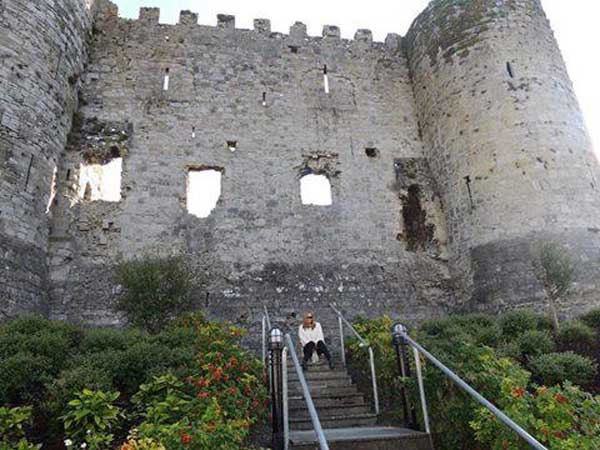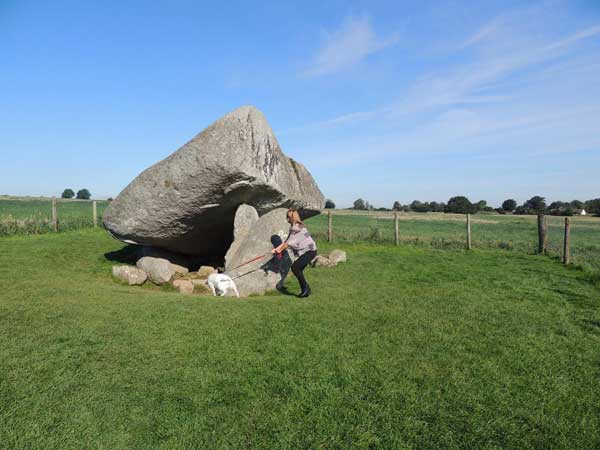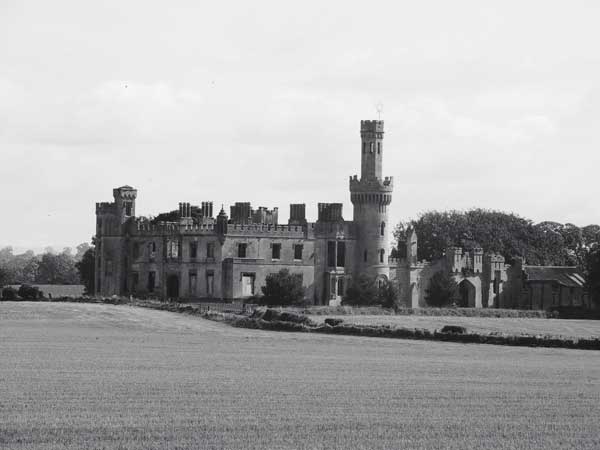My Real Ireland’s favourite things to do
Carlow in the heart of Ireland is a county, with rolling glens, hills, mountains and emerald green luscious pastures. A historic county that appears in some of Irelands most historic and epic tales. From our ancient monuments of wondrous magical stones, druids, medieval castles, famous knights, ghostly tales and historic houses whatever your interest Carlow has something to capture the imagination of everyone who visits.
Carlow Castle.
This ruined yet still spectacular Castle is located near the centre of Carlow town on the River Barrow. This outstanding example of medieval architecture was constructed between the years 1207 – 1213 by The Greatest Knight that ever lived William Marshal, Lord of Leinster.
The Marshal was married to the beautiful Isabel De Clare the only surviving child of the infamous Norman Lord Strongbow and Princess of Leinster Aoife McMurrough.
It is assumed that this Castle is the first of its kind to be constructed by the Norman’s in Ireland; this is a fortified towered Keep. The Castles life is long and distinguished; it was handed over to the Crown in 1537.
It was later bought by the Earl of Thomond in 1616 its ownership changing many times until the Cromwellian Conquest of Ireland. Now just the face of the West Wall and two Towers remain.
Ballyloughan Castle

Located at Bagnelstown, travel East onto R724. After approximately 3 kilometres take the right fork in the road, and after about 2 kilometres take a right. It is well signed posted. This now ruined Castle dates to approximately1300. It’s presence still dominates the lush pasture that surrounds this brilliant example of Norman strength.
It’s twin Towered Gate House is said to be one of the best examples of this type of architecture in Ireland. It’s consists of beautiful stonework and has magnificent vaulted ceilings.
There is archaeological evidence to suggest that this Castle was once also protected by a moat. It’s undisturbed views giving the garrisons of this Castle perfect vantage points for defence.
This is also an area of Ireland that would have been under attack from the Kavanagh Family of Wicklow who were expanding their lands.
Carlow Court House.
Open 10 – 13.00 and 14.00 to 16.00 but check their website of avoid disappointment. William Vitruvius Morrison designed the Count House. He was knighted for his world famous architectural achievements.
This outstanding architectural delight was constructed with granite.
The use of natural light being brought into the building was paramount to Morrison and his design vision, giving this court house the feeling of illumination. The historic cannon that now sits on the top of the entrance steps is of Russian origin, it was captured and given to the Irish to honour the men who fought and died in the Crimean War.
Dunleckney Manor
Muine Bheag.
County Carlow.
It is situated 2 kilometres north of Bagnelstown about 1 hour from Dublin. This magical manor house was constructed between 1585 – 1616 in the Tudor Gothic style.
The first house on this site was constructed by Sir Nicholas Bagenal. Walter Newtown renovated the Manor House we see today in 1850. He intertwined parts of this original structure in his new renovation design of Dunleckney Manor, features include Ashlar Masonerey and Oriel Windows and vaulted ceilings.
Surrounded by 9 luscious acres of beautiful parkland and magical Gardens. Today you can hire the Castle and it’s advertised on Air B n B.
Borris House.
Situated beautifully in the beautiful grasslands of the Barrow Valley, watched over by The Black Stairs Mountains and Mount Leinser.
Borris House is the ancestral home of the MacMurrough Kavanaghs, who’s distinguished history, included the title of Kings of Leinster.
This magnificent home was built in the Tudor Style of architecture and is one of the finest examples of this style of architecture in Ireland.
From the 15th Century castle to the magnificent structure you see today Borris House will guide you through history.
Even the Charter horn from the 12th Century Kavanagh family is still on display in Borris House. The house was badly damaged during the 1798 rebellion.
The house was restored in 1820 by Richard and William Vitruvius Morrison. Borris house is home to magnificent Stapleton Ceilings and the chapel of Saint Mollog.
A visit to Borris house could be compared to visiting the Downton Abbey of Ireland.
The house’s history is long and distinguished but its most powerful role in the history of Ireland was yet to come. In 1800 Arthur MacMurrough built a Saw Mill and Lace factory.
Lace making during that time helped people during the famine This horrific part of Irelands history was an unnecessary evil but it also brought about the birth of Borris Lace. Borris Lace was established as a non-profit business that was to give work to the women of Borris giving them essential work. He was also responsible for building 16 Arch Viaducts.
It was intended to bring a railway from Muine Beag to Wexford. Today the house is available for weddings and concerts.
There are also beautiful stone farm cottages for rent for self-catering. When you visit be sure to visit the Lace Gardens this area inspired by historic Borris Lace.
Browns Hill. Dolmen

Hackettstown Road
Hackettstown ,
Co Carlow.
This epic of an ancient Portal Dolmen is situated 3 kilometres from Carlow on the R726 road. Open 24 hours; there is a free car park that is a 5 minutes walk from the monument.
This Portal Dolmen is a must see for anyone visiting the area and is one of the finest example of Megalithic Monumentality in Ireland and is said to be the largest in Europe This is a prehistoric Portal Dolmen and dates to approximately 4000-3000 BC.
The capstone weighs between 100 and 150 tons held up by vertical stones. We do not know who built these magical monuments so this also caused confusion as to their use or purpose.
It is widely accepted and thought that these monuments were burial chambers; there are also discussions as to these monuments representing a portal to the next world that would have been of high importance to our ancients.
Many Dolmen Tombs have provided us with burial evidence usually one skeletal or cremation burial accompanied by various grave goods.
One thing is for certain are that were the burial grounds of high status people from our past, so important that there burial site is marked forever in mystical stones.
It is also possible that religious ceremonies and sacrifices would have been practiced here; these monuments have survived the ravages of time giving them a legendry and mystical presence. It is also thought that these sites were used as meeting places.
The Browns hill Dolmen has not been excavated somehow adding to the mystical properties of this site, wondering who was important enough to have these monuments in their honour
Duckett’s Grove, County Carlow.

The Duckett’s grove we see today is the skeletal remains of this once glorious 19th Century Gothic Revival Mansion. The walls seem to whisper of passion, love, intrigue and violence. A vacant building that is now home to the ghosts of its past and the wailing Banshee that haunts its high towers.
The Duckett’s grove we see today is the skeletal remains of this once glorious 19th Century Gothic Revival Mansion. The walls seem to whisper of passion, love, intrigue and violence. A vacant building that is now home to the ghosts of its past and the wailing Banshee that haunts its high towers.
Driving through the massive expansive and ornate gate that leads to Duckett’s Grove you can not help but get the sense that you are about to encounter something spectacular that was once the grandest home in this area. The freshly cut corn and the sound of nature engulfing you in the feeling that you are walking into a forgotten place that is frozen in time or that maybe times seems to have forgotten.
This haunting Gothic Revival Mansion was the centre of a massive estate that belonged to the Duckett Family. This estate spanned 12.000 acres of the Carlow Countryside. The original house on this site was a two-story Georgian Country home.
However, as the Duckett family’s wealth grew so did the house under William Duckett. The family began to entertain more and became a prominent member of society.
The local people of the area tell tales that refer to people dying shortly after having heard the wail of the Banshee of Duckett’s Grove.
It is also said that these bird filled haunted walls are haunted by the ghosts of the Duckett Family.
Hotels in Carlow.
My Real Ireland’s favourite places to stay in Carlow
https://www.talbotcarlow.ie
https://www.woodforddolmenhotel.ie
https://www.sevenoakshotel.com/index.html
http://www.dinnri.com

